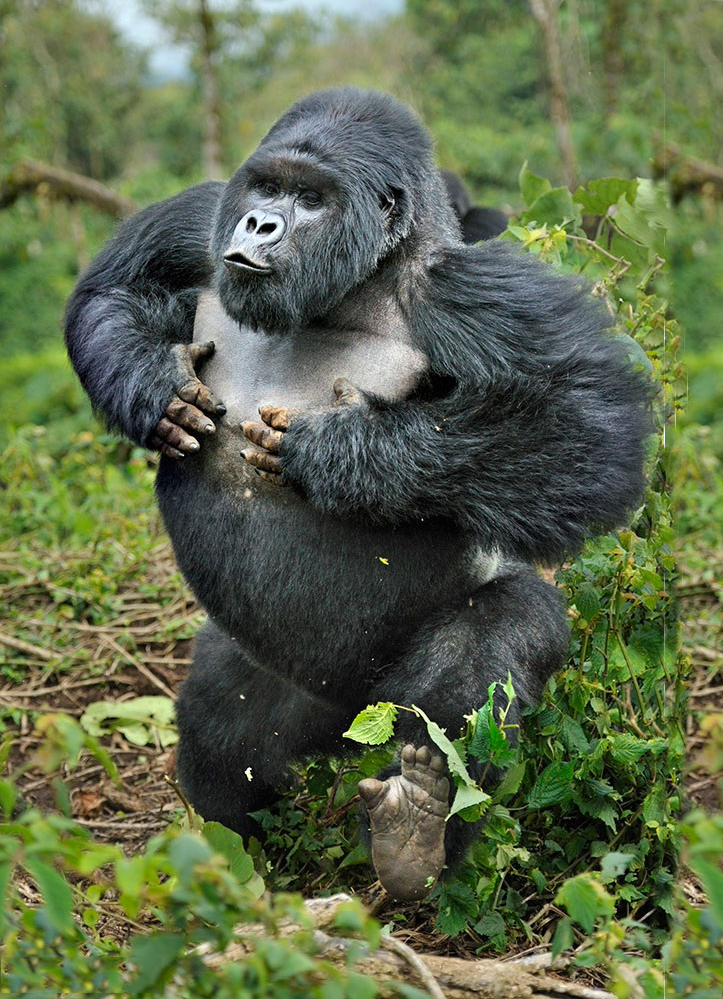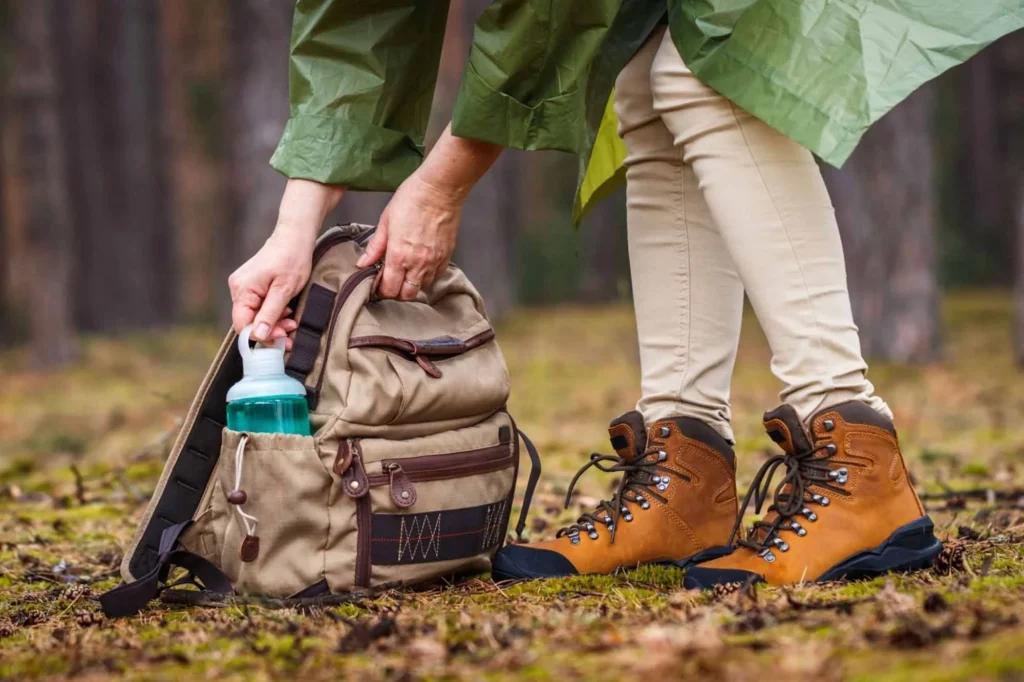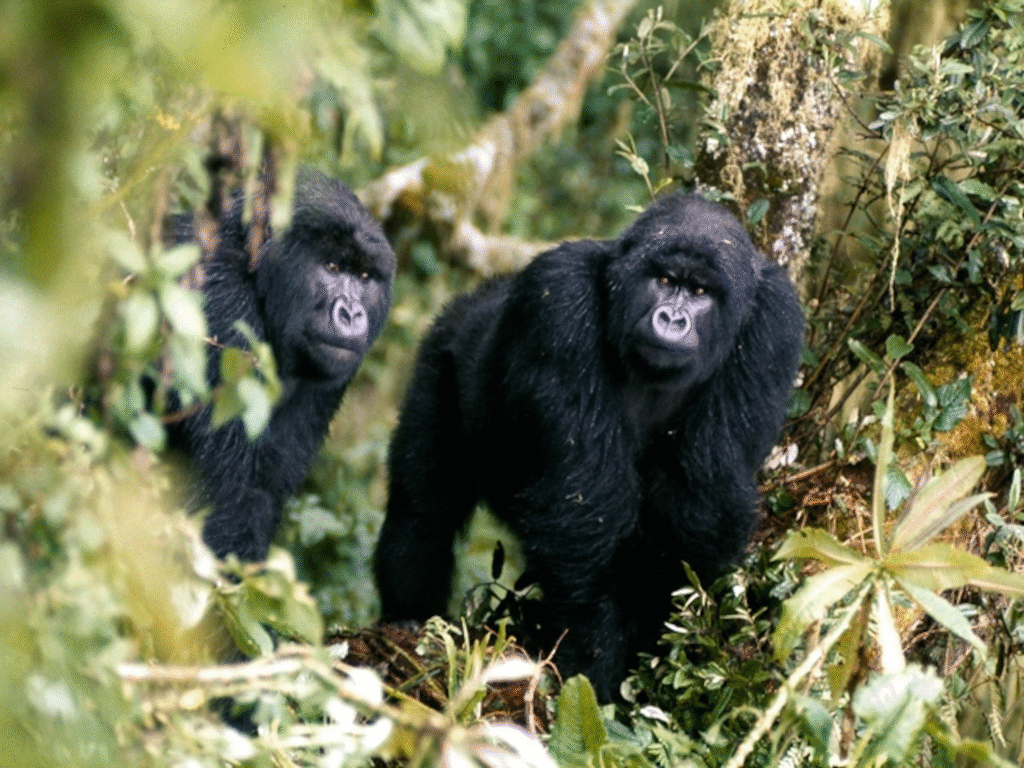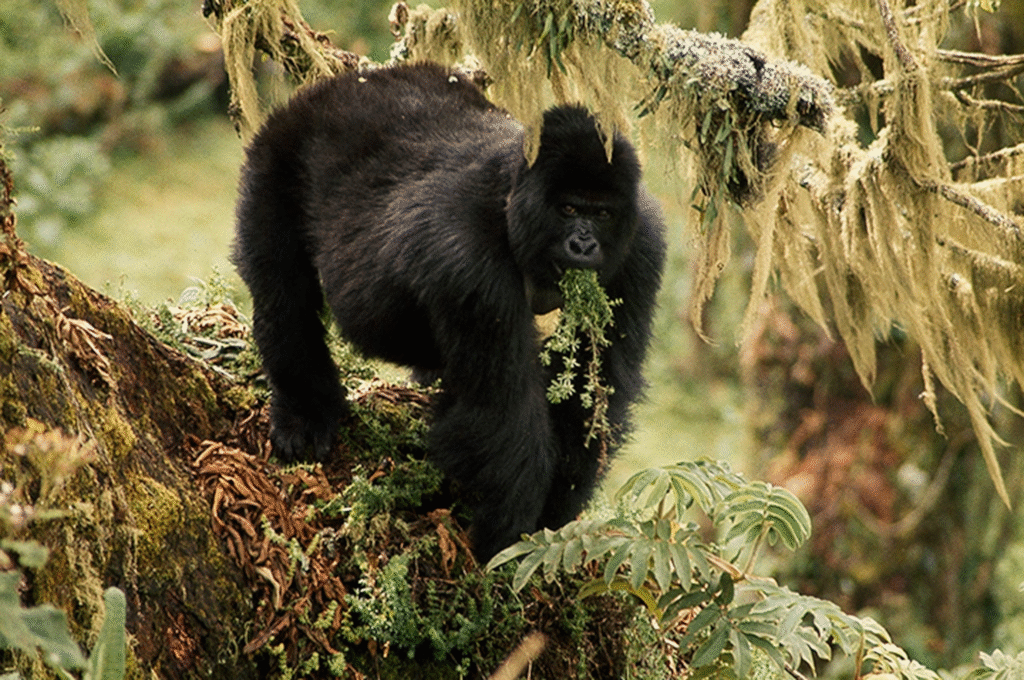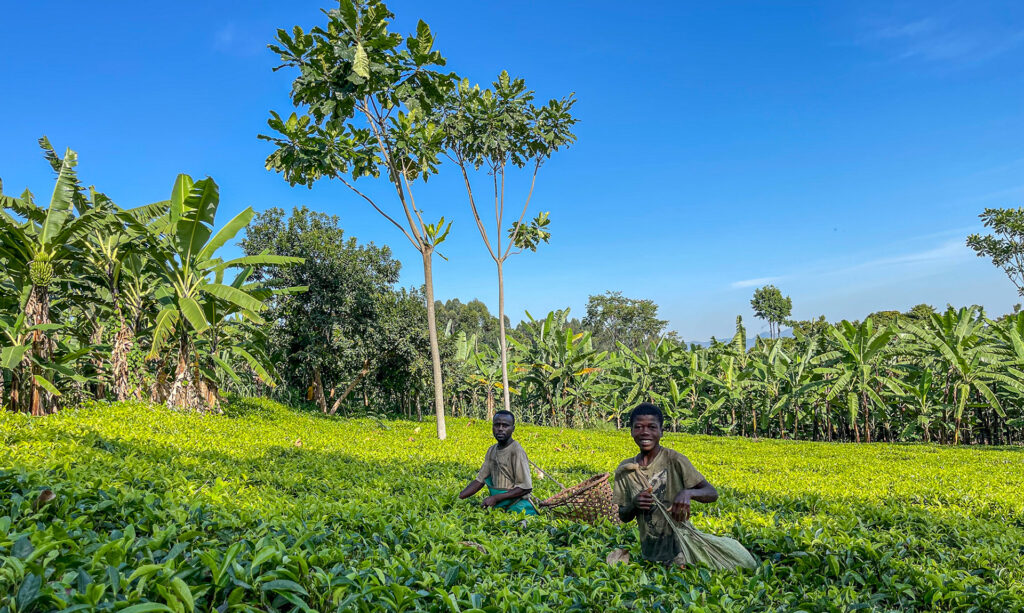Where the soul of the forest whispers in the mist
Gorilla conservation in Uganda is a powerful story of how responsible tourism has transformed not only the fate of mountain gorillas but also the lives of the people who live alongside them. Through carefully managed gorilla trekking experiences in parks like Bwindi Impenetrable and Mgahinga Gorilla National Parks, every permit sold contributes directly to protecting critically endangered gorillas, funding anti-poaching efforts, and sustaining the lush habitats they depend on. But the impact doesn’t stop there — local communities benefit from tourism revenue through employment, education, infrastructure, and cultural preservation, creating a shared responsibility to safeguard the forest.
This delicate balance of conservation and community empowerment has become one of Africa’s most celebrated success stories. Visitors aren’t just passive observers — they’re active participants in a conservation movement that values both wildlife and the people who live near it. Gorilla tourism in Uganda is more than just an adventure; it’s a meaningful exchange where travelers leave not only with incredible memories but also with the knowledge that their journey has helped protect giants of the jungle and uplift the heart of rural Uganda.
So lace up your boots, grab your camera, and prepare to meet the wild — this is where your gorilla trekking dreams and unforgettable safari adventures truly begin.
Truly Iconic Highlights in Uganda
Trek through Bwindi’s mystical rainforest and meet the endangered mountain gorillas in their breathtaking natural home.
Encounter mountain gorillas and golden monkeys on Mgahinga’s misty volcanic trails, where culture and alpine wildlife thrive together.
Unwind after your trek with a peaceful canoe ride across Lake Bunyonyi, Uganda’s most tranquil and scenic highland lake.
Enhance your gorilla trekking safari with an optional chimpanzee encounter in Uganda’s lush forests, adding depth and diversity to your primate adventure
Gorilla Conservation Through Tourism in Uganda – Protecting Giants, Empowering Communities
Every step you take through the forest trail doesn’t just lead you to gorillas—it leads you into the heart of one of the world’s most powerful conservation success stories. Welcome to Uganda, where tourism saves species.
Deep in the emerald jungles of Bwindi Impenetrable National Park and the mist-covered volcanoes of Mgahinga, something extraordinary is unfolding. As the world watches countless species teeter on the edge of extinction, Uganda’s mountain gorillas are making a quiet comeback—not because of fences or force, but because of people like you choosing to travel with purpose.
In Uganda, gorilla trekking is more than just a bucket-list experience. It’s a life-saving, community-strengthening, future-shaping form of conservation tourism. And this is its story.
The Conservation Crisis: Why Mountain Gorillas Needed Saving
Not long ago, mountain gorillas were predicted to vanish forever. By the mid-1980s, their numbers had plummeted due to intense poaching, habitat destruction, human-wildlife conflict, and the devastating legacy of political instability in the region. With fewer than 250 individuals left, many believed extinction was inevitable.
Mountain gorillas—Gorilla beringei beringei—live in only three countries: Uganda, Rwanda, and the Democratic Republic of Congo. Their survival has always depended on the fragile balance between biodiversity and human development, where land is limited and pressure is high.
Something had to change. And in Uganda, it did.
The Turning Point: When Tourists Became Conservation Allies
In 1993, Uganda introduced regulated gorilla trekking tourism, starting with the Mubare group in Bwindi. It was a radical idea at the time—allowing tourists to enter gorilla habitat, guided by trained rangers, in exchange for funding that would go directly into protecting these endangered animals and supporting nearby communities.
The idea worked. People began traveling across the world just for an hour with gorillas. That one hour became a lifeline—not just for the gorillas, but for Uganda’s forests, rangers, and rural families.
Today, Uganda is home to over half of the world’s remaining mountain gorillas, and their population continues to grow steadily thanks to this deeply integrated model of conservation tourism.
How Gorilla Tourism Supports Conservation in Uganda
1. Funding Wildlife Protection
Every tourist pays a gorilla trekking permit fee, currently priced at $800 USD for international travelers. A significant portion of this goes directly to the Uganda Wildlife Authority (UWA) for anti-poaching patrols, veterinary response units (like the Gorilla Doctors), habitat monitoring, and staff training.
2. Empowering Local Communities
Tourism isn’t just about wildlife—it’s about people. Around 20% of permit revenue is channeled back to local communities living near Bwindi and Mgahinga. This helps fund schools, clinics, clean water projects, and sustainable agriculture programs—all of which reduce the need to rely on poaching or illegal forest use.
3. Creating Jobs & Reducing Poverty
From porters to lodge staff, drivers to souvenir makers, gorilla tourism employs thousands of Ugandans in rural areas where formal employment is rare. This ripple effect uplifts families and creates a culture of shared responsibility for gorilla protection.
4. Raising Global Awareness
Travelers who meet gorillas often return home transformed—spreading awareness, advocating for conservation, and even supporting gorilla-focused charities or returning as repeat visitors.
5. Supporting Science and Monitoring
Tourism supports research and long-term gorilla monitoring. Regular visits by guides, trackers, and researchers mean that each gorilla is accounted for, observed, and protected—a unique level of care in global wildlife management.
Responsible Trekking: Tourism With Ethics
Uganda has set high standards for responsible tourism. Strict rules ensure that gorilla visits remain safe for both people and primates. Group sizes are limited to 8 visitors, contact time is capped at 1 hour, and visitors must maintain a 7-meter distance. If you’re sick, you’re not allowed to trek—because gorillas are susceptible to human illnesses.
These protocols don’t just protect gorillas; they remind us that respect is the foundation of all meaningful encounters.
The Role of Local People in Gorilla Conservation
One of the most inspiring aspects of Uganda’s conservation model is its deep integration with community life.
Former poachers have become rangers, trackers, and conservation educators. Women’s groups run eco-lodges and crafts centers. The Batwa people, once forest dwellers, now share their cultural heritage through guided forest walks and storytelling sessions, turning past trauma into sustainable income and cultural pride.
In places like Buhoma, Rushaga, Nkuringo, and Kisoro, the success of tourism has created a powerful truth: when conservation benefits people, people protect nature.
Challenges Still Remain
Despite this success, conservation through tourism is not without challenges. Political changes, global pandemics (like COVID-19), and climate shifts all affect tourism numbers. Deforestation pressures continue outside the parks, and the delicate balance between tourism growth and habitat protection must be carefully managed.
Uganda’s conservationists know this is a long game. But with continued support from responsible travelers, NGOs, and government commitment, the future for mountain gorillas has never looked more hopeful.
A Trek That Means More Than Just a Photo
When you book a gorilla trekking safari in Uganda, you’re not just booking a wildlife tour. You’re joining a movement. You’re walking into forests that stand because people fought for them. You’re looking into the eyes of a creature that nearly disappeared—and didn’t, because humanity cared enough to change the story.
You’re contributing to a cycle where your footsteps build schools, your laughter uplifts families, and your curiosity keeps rangers walking the hills.
More Gorilla Trekking Information to Know.
Gorilla trekking goes far beyond just the hike — it’s a deep, emotional journey into the heart of Africa’s last wild rainforests. Knowing the right timing, permits, fitness tips, and park details can turn your experience from good to unforgettable.
In the Realm of Giants – Bwindi & Mgahinga in Frames.
Wander through an elegant gallery capturing Uganda’s most exclusive gorilla sanctuaries, where ancient forests cradle the last mountain gorillas in a world of mist, mystery, and majesty.
Essential Planning Tips for Visiting Uganda’s National Parks.
Get ready for the wild heart of Africa with expert travel tips on when to visit, what to pack, where to go, and how to make the most of your safari across Uganda’s breathtaking national parks.
Why Uganda for Gorilla Trekking?
Uganda is not just a destination — it's the very soul of gorilla trekking. With over half of the world’s remaining mountain gorillas calling its misty forests home, Uganda offers the rarest encounters in their most authentic setting. Here, your journey is not rushed or crowded. Instead, you’re guided by experienced rangers through pristine jungles where gorillas live as they always have — wild, free, and magnificent
From insider travel insights to unforgettable trekking guides, our blog is your trusted path into Uganda’s wild heart — connecting you with mountain gorillas, breathtaking landscapes, and the soul-stirring adventures that make this land unlike any other.

